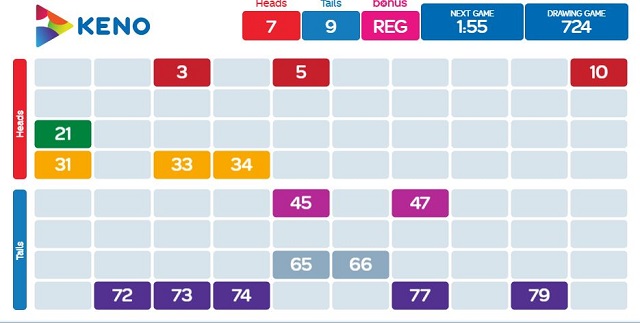

A lottery style game with elements of bingo and roulette, Keno is a game played by a lot of Australians. It is estimated that we spend almost $1 billion each year gambling on those big Keno jackpots.
With potential prizes exceeding $1,000,000 (or in some cases $5,000,000), the lure of the games is obvious; big bucks for a small stake.
But what is Keno, how do you play it and what are the chances of winning big? In this guide, we find out the answer to all these questions and give you some stats on just how popular the game of Keno really is.
Your Invitation to the Best Online Pokies in Australia
Like a punt on the slot machines?
Our top rated slots for October 2019 are the smash-hit online pokie sites: Ruby Fortune and Jackpot City Casino.
These sites include some impressive matched bonuses – up to $750 and $1600 respectively! With the potential for some seriously big wins, here’s your chance to get a piece of the action:
Similar in style to a lottery or bingo, Keno is a traditional Chinese game that is popular in casinos.
Typically, players select their gaming numbers from a range of 1 through 80 and lay a bet. You can usually choose up to ten numbers.
20 numbers are then randomly drawn as winning numbers. Players who match all (or a combination of) numbers receive a pay-out.
The game can be played electronically using gaming machines or you can participate in live games where numbers are drawn manually.
Though the game is thought to have originated in China, as a means of raising public funds to help fund the building of the Great Wall of China, the widespread popularity of Keno is fairly recent.
The Portuguese territory of Maccau established a lottery in 1847 in order to generate additional income for the government. It is believed that the results of the games were delivered to remote areas using carrier pigeons. This lead to the game being called báigē piào (pronounced baak-gap-piu) which translates as ‘white dove ticket’.
The original game used Chinese characters instead of numbers and it was believed 120 of these were used instead of the 80 we commonly use today.
During the 19 th century, Chinese immigrants brought the game to the West where it became known as boc hup bu and puck-apu. It was a popular game in many Chinatowns across Australia, eventually spreading to pubs and bars.
By the turn of the century, the game had become known as ‘Keno’ after the Latin/French word quine (or five winning numbers).
In Australia, you can play Keno at most of the state casinos but the most popular way to get involved is via the Tabcorp operated game of instant win Keno. However, the Tabcorp game is not available in Western Australia where you can only play Keno in the Crown Casino, Perth and South Australia where the games is run by SA Lotteries.
Governed by different rules depending on the state you are playing in, Tabcorp’s Keno offers a simple way to play and the chance to win some big prizes.
Games can be purchased from $1 (Keno Classic) and $2 (Mega Millions) with a chance to win $1,000,000 and $5,000,000 respectively. Games can be played via the website or using the app on your iOS device whilst in a mobile play area. You can also play at Keno terminals available in pubs and clubs across the country (except WA).
Live draws are played every three minutes.

The most popular and easiest way to play Keno is via the Tabcorp live draws. Image via keno.com.au
They also offer a way to double your money by playing Keno Heads & Tails; simply select from a choice of where the majority of drawn numbers will appear on the winning grid:
Keno is also available to play via online casinos like Casino Mate, Fair Go Casino and House of Jack.
Rules for online gaming vary by state but are governed by the Interactive Gaming Act meaning only licensed sites situated in Australia can offer cash prize games.
The average per capita spend on Keno is just $57.84 per annum with the most amount of money per person being spent in the Northern Territories and the least in Victoria: